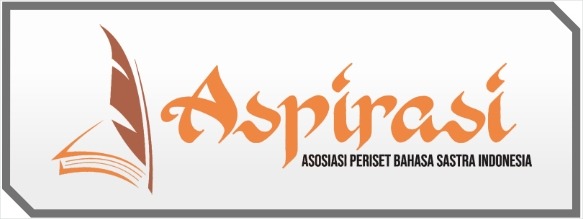Teaching Writing to Eighth Grade Students Using Semantic Mapping
DOI:
https://doi.org/10.61994/jee.v2i1.630Keywords:
semantic mapping, writing skills, middle school, teaching strategies, quasi-experimental designAbstract
This study investigates the effectiveness of semantic mapping as a teaching strategy to enhance the writing skills of eighth-grade students at SMPN 1 Bumi Agung. Semantic mapping, a visual tool that illustrates relationships between concepts, is hypothesized to aid students in organizing their thoughts and generating ideas for writing. The research employs a quantitative method through quasi-experimental design, collecting data by using writing test and analysing data with pre-test and post-test assessments to evaluate the impact of semantic mapping on students' writing proficiency. Results indicate a significant improvement in the writing abilities of students who were taught using semantic mapping compared to those who received traditional instruction. The findings suggest that semantic mapping is a valuable pedagogical tool in teaching writing to middle school students.
References
Abas, I. H., & Abd Aziz, N. H. (2018). Model of the Writing Process and Strategies of EFL Proficient Student Writers: A Case Study of Indonesian Learners. Pertanika Journal of Social Sciences & Humanities, 26(3).
Al Kamli, H. M. (2019). The effect of using mind maps to enhance EFL learners' writing achievement and students' attitudes towards writing at Taif University.
Al-Zyoud, A. A., Al Jamal, D., & Baniabdelrahman, A. (2017). Mind mapping and students' writing performance. Arab World English Journal (AWEJ) Volume, 8.
Amalia, H., Abdullah, F., & Fatimah, A. S. (2021). Teaching writing to junior high school students: A focus on challenges and solutions. Journal of Language and Linguistic Studies, 17(S2), 794-810.
Badr, H. M., & Abu-Ayyash, E. A. (2019). Semantic Mapping or Rote Memorisation: Which Strategy Is More Effective for Students' Acquisition and Memorization of L2 Vocabulary?. Journal of Education and Learning, 8(3), 158-174.
Baylis, J. (2020). The globalization of world politics: An introduction to international relations. Oxford university press, USA.
Bourouina, F. Z., & Berrouba, A. (2021). Importance of Mind Mapping in Enhancing the Students’ Writing Skills (Doctoral dissertation, Université Ibn Khaldoun-Tiaret-).
Buzan, T. (2006). The Mind Map Book: Unlock your creativity, boost your memory, change your life. BBC Active.
Cameron, A., & Galloway, N. (2019). Local thoughts on global ideas: Pre-and in-service TESOL practitioners’ attitudes to the pedagogical implications of the globalization of English. RELC Journal, 50(1), 149-163.
Canagarajah, S. (2018). Translingual Practice: Global Englishes and Cosmopolitan Relations. Routledge.
Creswell, J. W. (2012). Educational Research: Planning Conducting, and Evaluating Quantitative and Qualitative Research (4th ed) USA: Pearson Education, Inc.
Crystal, D. (2019). English as a Global Language. Cambridge University Press.
Drane, D. L., Pedersen, N. P., Sabsevitz, D. S., Block, C., Dickey, A. S., Alwaki, A., & Kheder, A. (2021). Cognitive and emotional mapping with SEEG. Frontiers in Neurology, 12, 627981.
Epstein, R. A., Patai, E. Z., Julian, J. B., & Spiers, H. J. (2017). The cognitive map in humans: spatial navigation and beyond. Nature neuroscience, 20(11), 1504-1513.
Eriksen, T. H. (2020). Globalization: The key concepts. Routledge.
Etikan, I., Musa, S. A., & Alkassim, R. S. (2016). Comparison of convenience sampling and purposive sampling.American journal of theoretical and applied statistics,5(1), 1-4.
Flowerdew, J. (2022). Models of English for research publication purposes. World Englishes, 41(4), 571-583.
Gianfrancesco, M., Hyrich, K. L., Al-Adely, S., Carmona, L., Danila, M. I., Gossec, L., ... & Robinson, P. C. (2020). Characteristics associated with hospitalisation for COVID-19 in people with rheumatic disease: data from the COVID-19 Global Rheumatology Alliance physician-reported registry. Annals of the rheumatic diseases,79(7), 859-866.
Graddol, D. (2020). English Next: The Future of English in the World. British Council.
Haleem, A., Javaid, M., Qadri, M. A., & Suman, R. (2022). Understanding the role of digital technologies in education: A review. Sustainable operations and computers, 3, 275-285.
Hoppe, H. U., & Gaβner, K. (2023). Integrating collaborative concept mapping tools with group memory and retrieval functions. In Computer Support for Collaborative Learning (pp. 716-725). Routledge.
Jenkins, J. (2017). The Global Spread of English and Its Implications for International Communication. Routledge.
Johnson, D. D., & Pearson, P. D. (2000). Teaching Reading Vocabulary. Holt, Rinehart, and Winston.
Kacetl, J., & Klímová, B. (2019). Use of smartphone applications in english language learning—A challenge for foreign language education. Education Sciences, 9(3), 179.
Kessler, G. (2018). Technology and the future of language teaching. Foreign language annals, 51(1), 205-218.
Lamb, M., & Arisandy, F. E. (2020). The impact of online use of English on motivation to learn. Computer Assisted Language Learning, 33(1-2), 85-108.
Lee, J., Kim, N., & Wu, Y. (2019). College readiness and engagement gaps between domestic and international students: Re-envisioning educational diversity and equity for global campus. Higher Education, 77, 505-523.
Leyi, W. (2020). World englishes (WE) and English as lingua franca (ELF): implications for English teaching and learning. International Journal of Information and Education Technology, 10(5), 389-393.
Luo, Y., & Shenkar, O. (2017). The multinational corporation as a multilingual community: Language and organization in a global context. Language in International Business: Developing a Field, 59-92.
Mahboob, A. (2018). Beyond global Englishes: teaching English as a dynamic language. RELC journal, 49(1), 36-57.
Nückles, M., Roelle, J., Glogger-Frey, I., Waldeyer, J., & Renkl, A. (2020). The self-regulation-view in writing-to-learn: Using journal writing to optimize cognitive load in self-regulated learning. Educational Psychology Review, 32(4), 1089-1126.
Phillipson, R. (2018). Linguistic Imperialism Continued. Routledge.
Pribadi, B. A., & Susilana, R. (2021). The Use of Mind Mapping Approach to Facilitate Students' Distance Learning in Writing Modular Based on Printed Learning Materials. European Journal of Educational Research, 10(2), 907-916.
Rashid, Y., Rashid, A., Warraich, M. A., Sabir, S. S., & Waseem, A. (2019). Case study method: A step-by-step guide for business researchers. International journal of qualitative methods,18, 1609406919862424.
Sierpowska, J., Gabarrós, A., Fernández-Coello, A., Camins, À., Castañer, S., Juncadella, M., ... & Rodríguez-Fornells, A. (2019). White-matter pathways and semantic processing: intrasurgical and lesion-symptom mapping evidence. NeuroImage: Clinical, 22, 101704.
Uchidiuno, J. O., Ogan, A., Yarzebinski, E., & Hammer, J. (2018). Going global: Understanding English language learners’ student motivation in English-language MOOCs. International Journal of Artificial Intelligence in Education, 28, 528-552.
Widyastuti, S. (2018). Fostering critical thinking skills through argumentative writing. Yogyakarta State University.
Wimmer, A. (2023). Nation building: Why some countries come together while others fall apart. In Survival 60.4 (pp. 151-164). Routledge.
Downloads
Published
Issue
Section
License
Copyright (c) 2024 Ahmad Basuni

This work is licensed under a Creative Commons Attribution-ShareAlike 4.0 International License.

Journal of English Education by https://jurnal.dokicti.org/index.php/JCSS/index
is licensed under a Creative Commons Attribution-ShareAlike 4.0 International Licensel
















